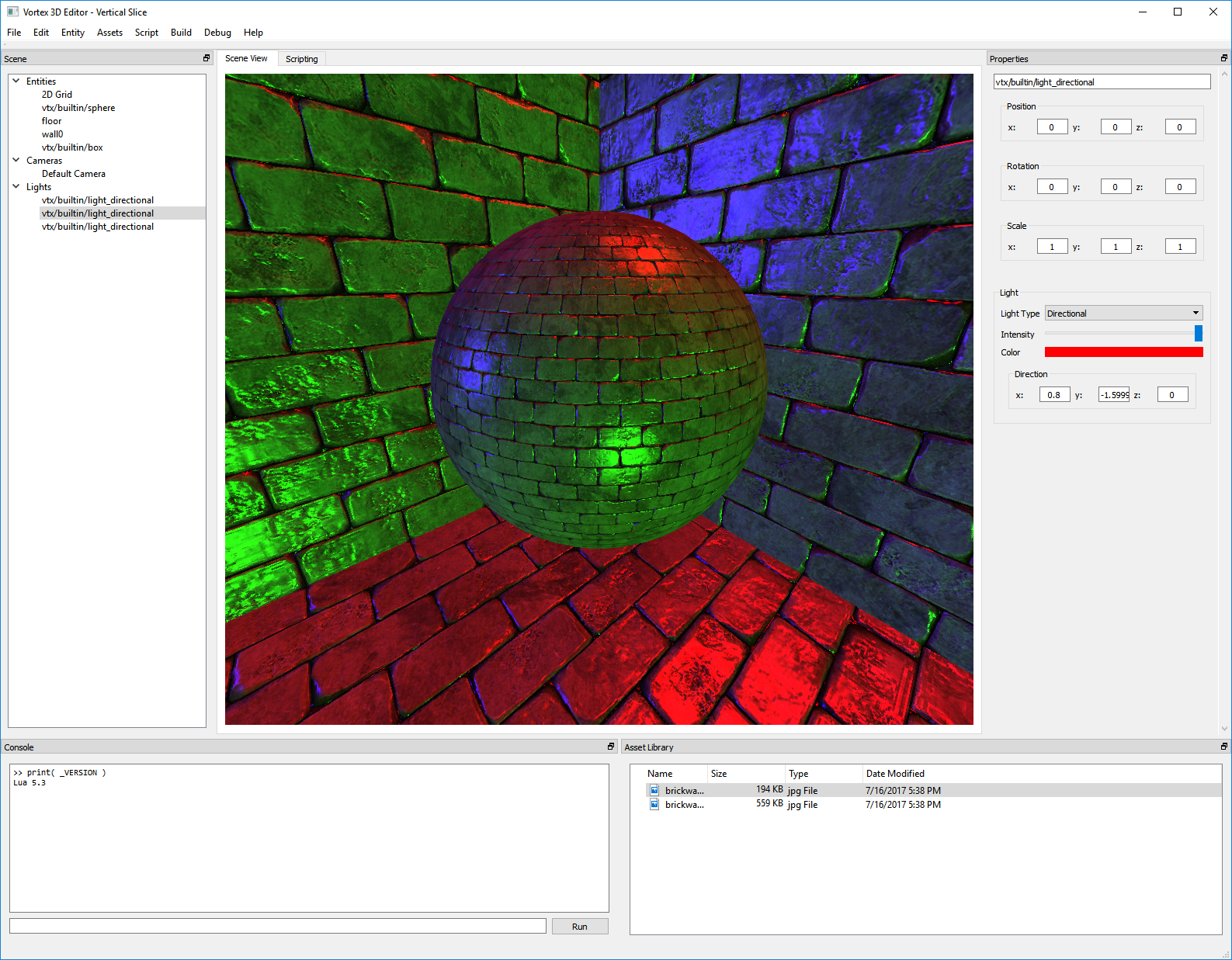Multiple Directional Realtime Lights
This week work went into supporting multiple directional realtime lights in the new Vortex V3 renderer.

In the image above, we have a scene composed of several meshes, each with its own material, being affected by three directional lights. The lights have different directions and colors and the final image is a composition of all the color contributions coming from each light.
In order to make the most out of this functionality in the engine, I revamped the Light Component Inspector. It’s now possible to set the direction and color through the UI and see the results affect the scene immediately. You can see the new UI in the screenshot above.
Now, since lights are entities, I considered reusing the entity’s rotation as a way to rotate a predefined vector and thus defining the light. In the end, however, I decided against it. The main reason was that I think it is more clear to explicitly set the direction vector in the UI rather than having the user play with angles in their head to figure out an obscure internal vector. This way, you can specify the vector directly.
I’m pretty happy with the results. Internally, each light is computed individually and then all contributions are additive-blended onto the framebuffer. This means the cost of render n objects affected by m lights is going to be n + m draw calls. This is a big advantage over the forward rendering equivalent, which would require at least n * m draw calls.
Notably missing from the image above is color bleed. Photorealism is addictive: the more your approximate real life, the more you can tell when an image is synthetic if something is missing. This will be a topic for another time however.
Next week I want to make some additions to the material system to make it more powerful, as well as start implementing omnidirectional lights.
Stay tuned for more!